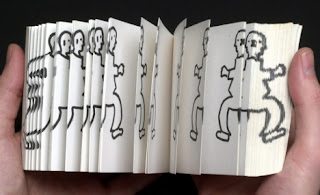
Unit 34 Task 1:Understand the techniques and development of 2D animation Techniques Traditional 2D animation (flick book, cel animation, rotoscoping, drawn on film, photographic stills); Flick book: It's a number of images that act as frames to the animation that vary a little bit from each other so when pages are flipped rapidly you can see an animation/motion. Cel animation: Technique used to draw a set of image that can be layered on each other forming a full image or detailed environment. Thanks to that layers can be separately taken out and swapped with something different making an animation or film; just like in theatre. Rotoscoping: Basically rotoscoping is as tracing a life form action into animation drawing a frame by frame movement, like walking of a person. Tracing is done using motion picture footage so it traceable for the artist. This method was used when a realistic action was need for the animation to...